ABSOT Sits Down with Susan Brown of Susan G. Komen to Learn About Male Breast Cancer
As ABSOT continues to expand its focus on other men’s health issues, I’m eager to expand my own knowledge of various conditions. Specifically, I’m interested in learning more about prostate cancer (since my investigation into The Urology Foundation’s study showed me just how lacking I am in this area), colon cancer, and male breast cancer.
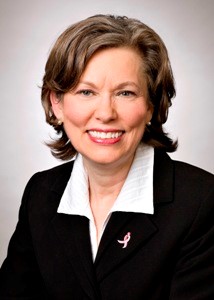
I had the opportunity to speak with male breast cancer survivor John Falk back in October 2018, but recently I had the opportunity to connect with Susan G. Komen, which is arguably the world’s best known and largest breast cancer organization.
I spoke with Susan Brown, the Senior Director of Education and Patient Support. In her role, she oversees the information about breast cancer on the website, the patient helplines, and the treatment assistance program. Most interestingly to me, she has an oncology nursing background. Prior to coming to Komen, Ms. Brown worked in an imaging center where they saw both men and women.
During the course of our conversation, I had a goal to understand two main topics – what must men know about breast cancer and how do we let men know that breast cancer isn’t just for women?
What do men need to know about male breast cancer?
First and foremost, Ms. Brown said that men simply need to know that they can get breast cancer. Often, this “comes as a surprise to both genders,” as we don’t necessarily think of men having breasts. They also need to be able to recognize signs and symptoms of male breast cancer, including:
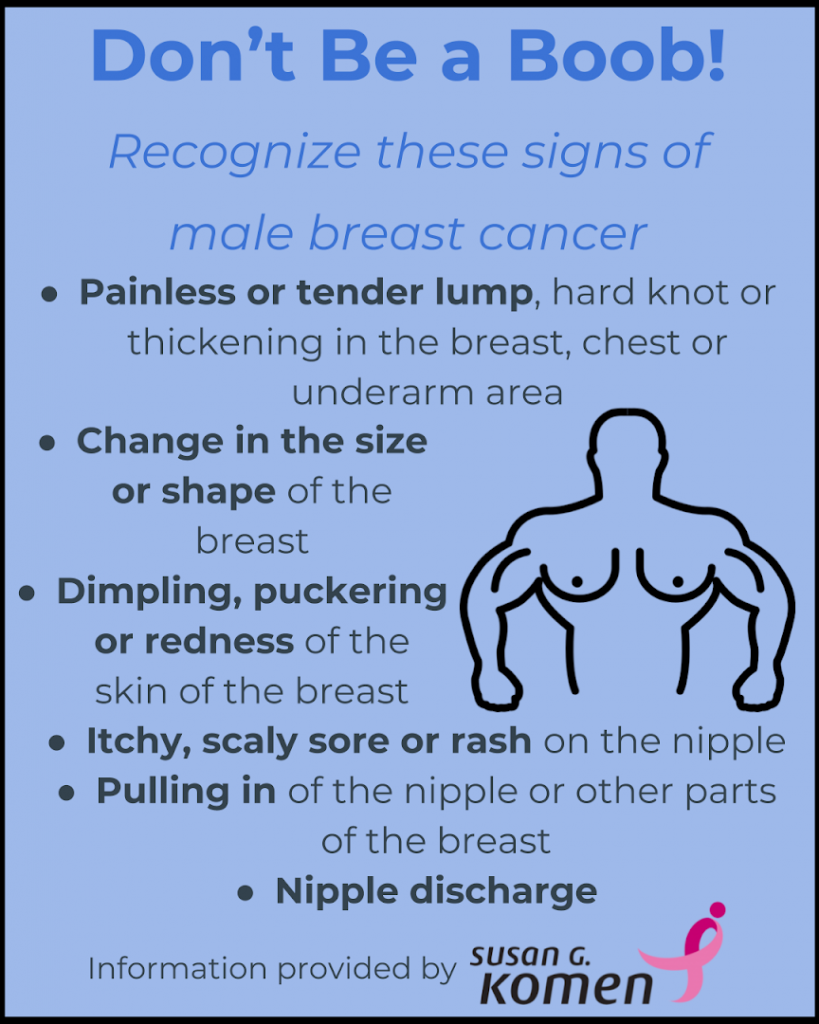
- Lump, hard knot or thickening in the breast, chest or underarm area (usually painless, but may be tender)
- Change in the size or shape of the breast
- Dimpling, puckering or redness of the skin of the breast
- Itchy, scaly sore or rash on the nipple
- Pulling in of the nipple (inverted nipple) or other parts of the breast
- Nipple discharge (rare) [86,88-89].
These symptoms may also be signs of a benign breast condition. Some of these signs can be easier to notice in men than in women, since men tend to have much less breast tissue than women.
Regardless, Komen feels that men need to know this information to help get care. Even as a self-proclaimed men’s health activist, I didn’t know all of these signs. Suffice it to say, I felt like a boob for not knowing this.
Do men need to do breast self-exams?
I constantly repeat the need for men to do testicular self-exams, and I was curious what the current recommendation is for breast self-exams.
Ms. Brown shared that it should be a routine procedure for men who are at high risk for breast cancer. This includes men with known gene mutation, such as BRCA1 and BRCA2. On the topic of BRCA genes, which I discussed in my interview with Dr. Nussbaum, it’s important to note that everyone has a BRCA gene.
When they work properly, they actually protect against tumors, but it’s when they’re mutated that they create a higher risk for developing breast cancer. Others at a high risk include those that have a member of their family in which breast cancer mutations are present, have a personal history of radiation therapy for other cancers like Hodgkins, or have other conditions with genetic mutation.
However, for the non-mutated, average man, breast self-exams are not recommended. Looks like the X-Men need to be doing regular self-exams, but the Avengers are exempt.
How can men break down the thought that it only happens to women?
Shifting gears, I wanted to discuss what men can do to eradicate the misconception that only women can get breast cancer. Once they know that they can get the disease and understand the warning signs, how can they help other men to understand the same? Simply, Ms. Brown recommends that those in the know just talk about male breast cancer – with both sexes. Knowledge is power and this is exactly what happened 40 years ago with women, which increased detection and screening for breast cancer. Even though breast cancer in men is rare, it does happen. The stats don’t lie – we need to talk about it.
To underscore that point, Komen shared some of these statistics with me:
- In the U.S., less than 1 percent of all breast cancer cases occur in men.
- The lifetime risk of getting breast cancer is about 1 in 1,000 in U.S. men compared to 1 in 8 for U.S. women.
- In 2019, it’s estimated that among men in the U.S., there will be 2,670 new cases of invasive breast cancer and 500 breast cancer deaths
- Survival rates for men are about the same as for women with the same stage of breast cancer at the time of diagnosis.
- However, men are often diagnosed at a later stage of breast cancer. Men may be less likely than women to report symptoms, which may lead to delays in diagnosis.
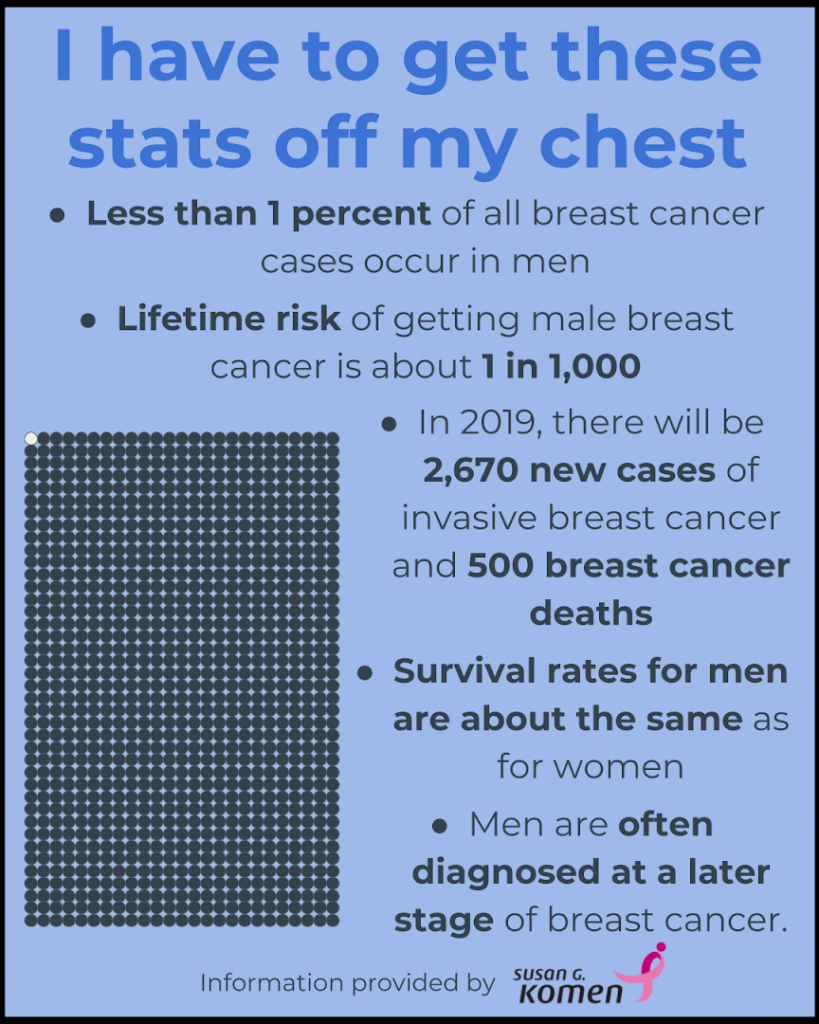
Ms. Brown emphasized the importance of having these discussions with both men and women. She felt that women in many households make a lot of healthcare decisions and they can notice changes in the men in their life. Especially paired with the information from the MENtion It surveys through the Cleveland Clinic, it’s very clear that women have a key role in men’s health.
Making sure everyone is aware of health issues and holding everyone accountable for taking their health seriously is the sort of world I want to live in.
What does Komen plan to do to raise awareness about breast cancer in men in 2019 and beyond?’
Finally, I wanted to know what Komen had on the docket to make male breast cancer more visible going forward. It turns out that they’ve already got the ball rolling on this titillating topic.
They’re committed to being “quite deliberate” when talking about breast cancer, by adding “and men” to their statistics when they are discussing incidence rates and impacts. They have created a number of educational materials aimed specifically at men, including a resource entitled “Men Get Breast Cancer, Too,” a helpline, support groups, and more. To help keep all the resources they gave me in one place, I created this page on ABSOT for male breast cancer resources.
Furthermore, they are recognizing that breast cancer is synonymous with pink, which isn’t an inherently masculine color, despite my high school prom tie color. A lot of their resources for men with male breast cancer either omit the pink entirely or have a mix of blue and pink, which is more appealing for men. Additionally, they try to use words like ‘pecs’ or ‘chest’ when talking about anatomy, since men may not make the inherent connection that it’s the same thing as breasts.
In closing, I have a challenge for you.
Take one thing you learned about male breast cancer and share it with someone you care about – male or female. In turn, encourage them to share it out to someone else.
Together, we can make a nipple ripple effect that will add to the the world’s collective chest of knowledge about male breast cancer.
A self exam is how most cases of testicular cancer are detected early. Click the image for video directions or click here for a larger version
Want to work with Justin? Click here to learn more.
ABSOT is endorsed by the Laughter Arts and Sciences Foundation, a registered 501.c.3 charity. To make a tax-deductible contribution to help continue ABSOT's work with testicular cancer awareness and men's health, click the image below.

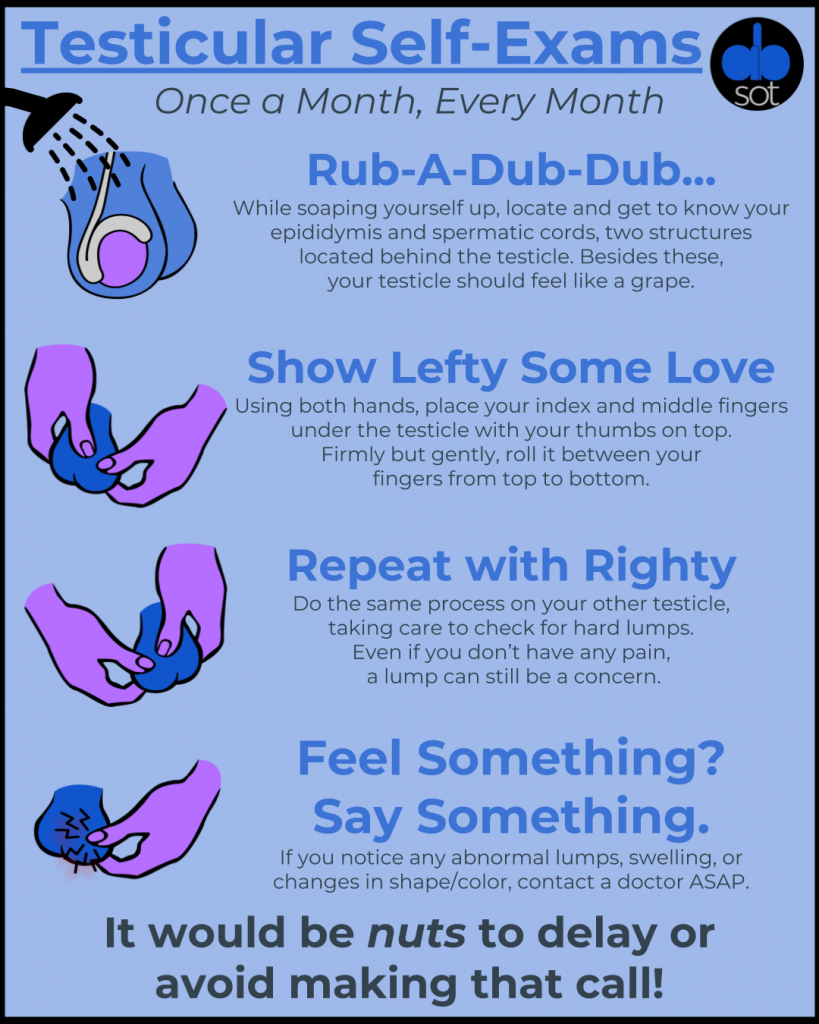





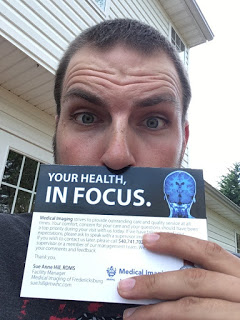


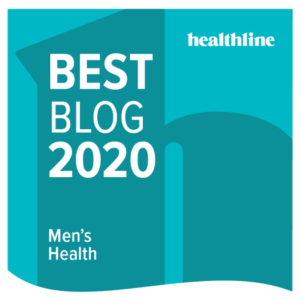

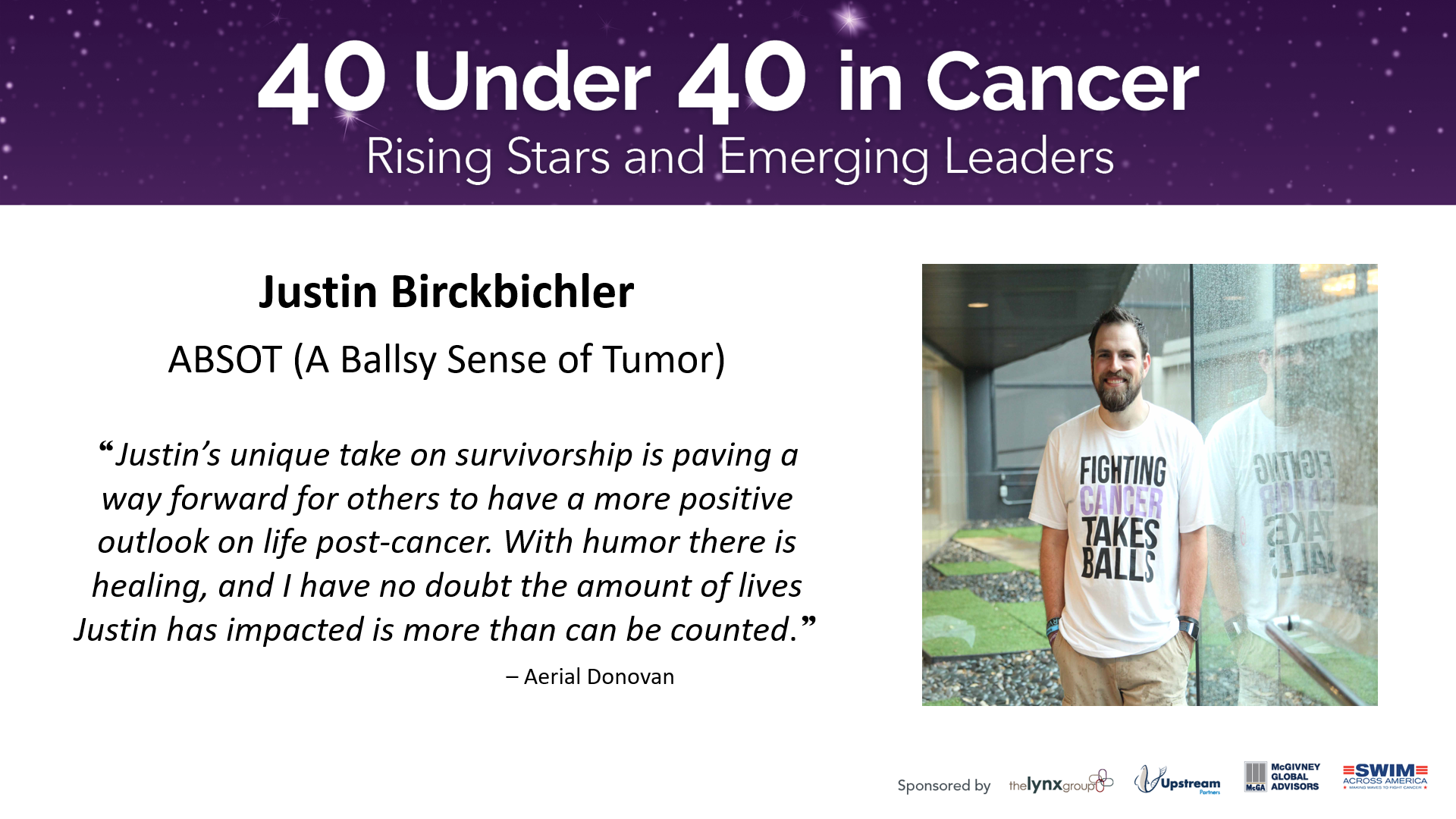




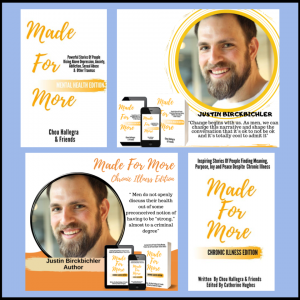


3 Responses
[…] I had an opportunity to connect with Susan G. Komen, they also offered me the chance to speak with a male breast cancer survivor. While talking to […]
[…] Susan Brown, the Senior Director of Education and Patient Support for Susan G. Komen. We had a fascinating conversation about male breast cancer, what the foundation plans to do to educate men, and how they aim to dispel the notion that breast […]
[…] many reasons, but mostly because I really didn’t know how to tell my story. See, for me, having breast cancer is best described by an old Texas Aggie motto about traditions in Aggieland: “From the outside […]